
Federico Fellini was an Italian filmmaker. He is known for his distinctive style, which blends fantasy and baroque images with earthiness. He is recognized as one of the greatest and most influential filmmakers of all time. His films have ranked highly in critical polls such as that of Cahiers du Cinéma and Sight & Sound, which lists his 1963 film 8+1⁄2 as the 10th-greatest film.

All That Jazz is a 1979 American musical drama film directed by Bob Fosse. The screenplay, by Robert Alan Aurthur and Fosse, is a semi-autobiographical fantasy based on aspects of Fosse's life and career as a dancer, choreographer and director. The film was inspired by Fosse's manic effort to edit his film Lenny while simultaneously staging the 1975 Broadway musical Chicago. It borrows its title from the Kander and Ebb tune "All That Jazz" in that production.
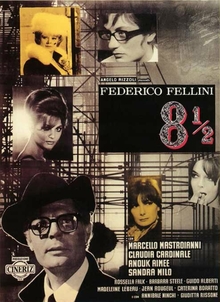
8+1⁄2 is an Italian 1963 surrealist comedy-drama film directed and co-written by Federico Fellini. The metafictional narrative centers on Guido Anselmi, played by Marcello Mastroianni, a famous Italian film director who suffers from stifled creativity as he attempts to direct an epic science fiction film. Claudia Cardinale, Anouk Aimée, Sandra Milo, Rossella Falk, Barbara Steele, and Eddra Gale portray the various women in Guido's life. The film is shot in black and white by cinematographer Gianni Di Venanzo and features a soundtrack by Nino Rota, with costume and set designs by Piero Gherardi.

House on Haunted Hill is a 1999 American supernatural horror film directed by William Malone and starring Geoffrey Rush, Famke Janssen, Taye Diggs, Ali Larter, Bridgette Wilson, Peter Gallagher, and Chris Kattan. The plot follows a group of strangers who are invited to a party at an abandoned insane asylum, where they are offered $1 million each by an amusement park mogul if they are able to survive the night. Produced by Robert Zemeckis and Joel Silver, it is a remake of the 1959 film of the same title directed by William Castle, and features special effects by famed make-up artists Gregory Nicotero and Dick Smith.
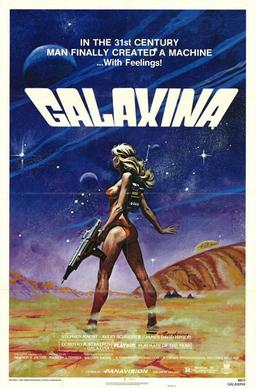
Galaxina is a low-budget 1980 American science fantasy-comedy film written and directed by William Sachs. The film stars 1980 Playboy Playmate of the Year Dorothy Stratten, who was murdered by her husband shortly after the film's release.
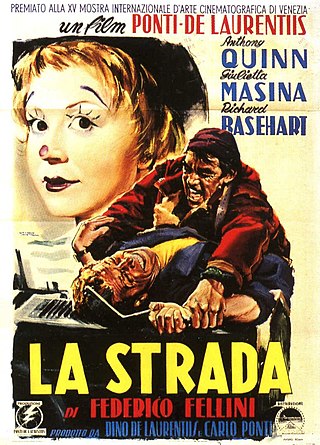
La strada is a 1954 Italian drama film directed by Federico Fellini and co-written by Fellini, Tullio Pinelli and Ennio Flaiano. The film tells the story of Gelsomina, a simple-minded young woman bought from her mother by Zampanò, a brutish strongman who takes her with him on the road.

Thomas Frank Mankiewicz was an American screenwriter, director, and producer of motion pictures and television whose credits included James Bond films and his contributions to Superman: The Movie (1978) and the television series Hart to Hart. He was the son of Joseph Mankiewicz and nephew of Herman Mankiewicz.

I vitelloni is a 1953 Italian comedy drama film directed by Federico Fellini from a screenplay written by himself, Ennio Flaiano and Tullio Pinelli. It stars Franco Interlenghi, Alberto Sordi, Franco Fabrizi, Leopoldo Trieste, and Riccardo Fellini as five young Italian men at crucial turning points in their small town lives. Recognized as a pivotal work in the director's artistic evolution, the film has distinct autobiographical elements that mirror important societal changes in 1950s Italy.

The Incredible Melting Man is a 1977 American science fiction horror film directed and written by William Sachs. The plot concerns an astronaut whose body begins to melt after he is exposed to radiation during a space flight to Saturn, driving him to commit murders and consume human flesh to survive. During post-production, the producers reshot scenes without Sachs' participation. The film starred Alex Rebar as the main character, alongside Burr DeBenning as a scientist trying to help him and Myron Healey as a United States Air Force general seeking to capture him. While writing and shooting, Sachs was influenced by Night of the Living Dead. With the changes by the producers, the final film has been described as a remake of First Man into Space (1959), which in turn was directly influenced by The Quatermass Xperiment, even though Sachs had never seen either of those films.
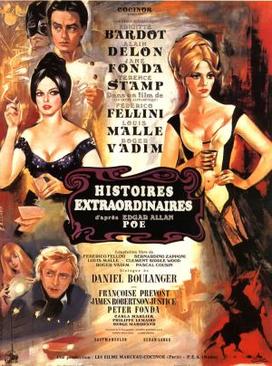
Spirits of the Dead, also known as Tales of Mystery and Imagination and Tales of Mystery, is a 1968 horror anthology film comprising three segments respectively directed by Roger Vadim, Louis Malle and Federico Fellini, based on stories by Edgar Allan Poe. A French-Italian international co-production, the film's French title is derived from a 1856 collection of Poe's short stories translated by French poet Charles Baudelaire; the English titles Spirits of the Dead and Tales of Mystery and Imagination are respectively taken from an 1827 poem by Poe and a 1902 British collection of his stories.

Exterminator 2 is a 1984 American action thriller film written and directed by Mark Buntzman, starring Robert Ginty, Mario Van Peebles, and Deborah Geffner, with cameos by Arye Gross in his debut role, and John Turturro in his second role. It is the sequel to the 1980 film The Exterminator.
Stephen Semel is an American film and television editor, film producer, production manager, and actor. He has worked as an editor for mainstream movies, such as Airheads, The Count of Monte Cristo, Fandango, Kuffs, License to Drive, Miracle Mile, My Giant, One Eight Seven, Only the Strong, Three to Tango, The Truth About Cats & Dogs, The Way of the Gun, and You So Crazy. Semel has also edited episodes of several television series, including episodes of Century City, Dragnet, Kyle XY, House, Melrose Place, and Tales from the Crypt.
George Bowers was an American film director, editor and producer. He had nearly thirty credits as a feature-film editor in a career spanning nearly forty years.
There Is No 13 is a 1974 American surrealist drama film directed by William Sachs and starring Mark Damon. It was entered into the 24th Berlin International Film Festival.

Van Nuys Blvd. is a 1979 comedy film written and directed by William Sachs and released by Crown International Pictures. It features 1974 Playboy Playmate of the Year Cynthia Wood. The film's tag line is: "The Greatest Cruisin' in the Land Takes Place on the Street -- Where it all Began ..."
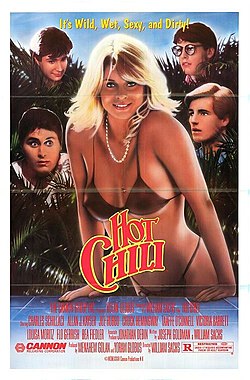
Hot Chili is a 1985 comedy film directed by William Sachs, and co-written by Sachs with Menahem Golan. It stars Allan Kayser, Joe Rubbo, and Taaffe O'Connell. It was filmed in Mexico.
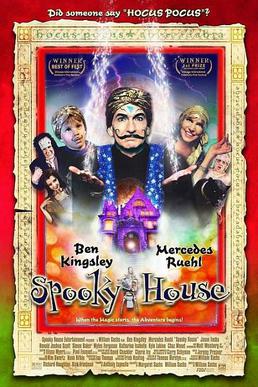
Spooky House is a 2002 American family comedy film directed, co-produced and co-written by William Sachs, and starring Ben Kingsley and Mercedes Ruehl. It was entered into the Chicago International Children's Film Festival, winning two awards, "Best Of Fest" and the "Children's Jury Award".
Judgement is a 1992 drama film written and directed by William Sachs. Beside many known actors, it also features appearances by actual gang members from Los Angeles. Due to its realism, Father Greg Boyle has used the film to show at-risk youths the dangers of gang life.
Vansploitation is a term used for a genre of American independent films from the 1970s in which vans are a "key element to the plot", and that often feature comedic stories about college-age people.
Marilyn Jacobs Tenser was an American film producer known for her work on independent films of the 1970s through the early 2000s.













